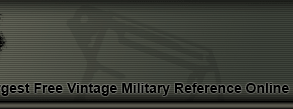

WWII USMC Herringbone Combat Uniform -
The US MArine Corps saw extensive combat in the Pacific theater during WWII. The need to develop
a combat uniform for the tropical conditions of the battlefield arose. The answer came in the
form of herring bone twill.
Also known as HBT. This material was lightweight and more rip resistant. An OD color was
adopted to better blend with the surrounding vegetation.
The photo above shows a group of
Marines shooting in a range during boot camp - WWII. They are wearing the same type of uniform as
it is shown in this page.


This is an example of the Marine Corps fatigues employed during WWII. The top photograph shows
a marine where the front of the tunic can be appreciated. This same type of uniform was employed
during the Korean war. A similar type was also used during the
Vietnam war, but the
material was changed to sateen.

 The uniform featured here has a tunic and pants. The construction of the tunic consisted of two
lower pockets and one top pocket. None of the pockets have a flap. They are exposed. This
was a problem because the items placed on the pockets would fall off when the soldier ran and
moved swiftly.
The uniform featured here has a tunic and pants. The construction of the tunic consisted of two
lower pockets and one top pocket. None of the pockets have a flap. They are exposed. This
was a problem because the items placed on the pockets would fall off when the soldier ran and
moved swiftly.
The top pocket has a black ink stamp consisting of the Marine Corps emblem (EGA) and the
letters USMC placed just below the EGA. A similar type of
stamp is placed on the inside
near the neck. This contains the size of the tunic as well as manufacturing information.
The uniform comes with all metal buttons
that are riveted in place. The face is flat and has the letters "US" in the upper section,
followed by "Marine Corps".
There were several types of
patches that could be sewn
to the arms. Usually they consisted of the rank and unit. It was not customary to place
insignia on this tunic.


|
This page is a recognition and identification guide for WWII US military uniforms.
Multiple detailed photos of a specific sample are provided. Descriptions point out
clearly defined points that should be noted.
One of the most commonly asked questions is "How much is my WWII US uniform worth?".
A price guide is included here to address this question. The value of the uniforms is
reviewed over a period of several years. A trend can be observed. The present worth
of the American military uniforms in the collector's market is illustrated.
This service is provided free of charge to the visitor/enthusiast courtesy of
MilitaryItems.com,
a company dedicated to the preservation of military history and to providing quality
military antiques and collectibles to museums, institutions and the general public.
|
|


(top-left) The buttons in the uniform are made of metal and have the words "Marine Corps" embossed
on them. (top-right) Unlike other uniforms, this one does not have a tag but rather
the information is stamped (EGA) with black ink on the collar area.
The long sleeves had two adjustments which could be executed by securing the sleeve to one of
two buttons. This feature was provided to be used under windy and rainy conditions.


Since the USMC saw alot of action during the war, these uniforms are getting hard to obtain.
Most of them were worn out, lost or out right destroyed over a period of time.
The tunic was issued with a matching set of pants.
This WWII US uniform may be currently
reproduced.
It is becoming more difficult to be able to tell the fake ones from the real ones because
the quality of the reproductions is improving. The collector must become familiarized with
the construction style and materials employed in the manufacturing of this item.
Attention to the details is critical in order to be able to determine the authenticity of
the collectible.
If you have an interest is seeing other WWII US uniforms, you can do so by going to our
American Military Uniforms Price Guide.
Where we cover Army, Navy, Air Force, Marine Corps and other organizations.
|
|
PRICING GUIDE INFORMATION
The value for WWII US uniforms and other military antiques and collectibles
is provided as a means to educate the collector community and individuals who have a general
interest on the field. The following is an estimated value. Prices may vary in every state and
every country. This service is provided courtesy of
MilitaryItems.com.
The source for military antiques and collectibles in the web.
| Year |
2016 |
2017 |
2018 |
2019 |
2020 |
2021 |
2022 |
2023 |
2024 |
2025 |
| Value |
$300.00 |
$300.00 |
$320.00 |
$350.00 |
$375.00 |
$375.00 |
$385.00 |
$400.00 |
$400.00 |
$425.00 |
| Availability |
Medium |
Medium |
Rare |
Rare |
Rare |
Rare |
Rare |
Rare |
Rare |
Rare |
| Invest Grade |
A |
A |
A |
A |
A |
A |
A |
A |
A |
A |
While the item featured here is not for sale, similar items like it are available for
purchase in our website MilitaryItems.com
|







